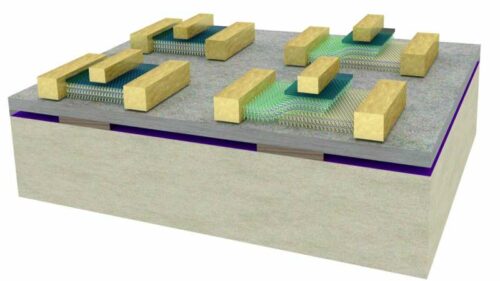- Witness the dawn of neuromorphic systems, promising unparalleled intelligence and efficiency in electronic devices.
- Two-dimensional semiconductors and ferroelectric materials form a synergy, enhancing energy efficiency and computing capabilities.

Our brains process and store data concurrently in a world characterised by continuous information flow, while devices employ digital processing through discrete binary code. The researchers at École Polytechnique fédérale de Lausanne (EPFL) have introduced a breakthrough technology that harmonises continuous analog processing with digital precision. This innovation integrates ultra-thin, two-dimensional semiconductors with ferroelectric materials, enhancing energy efficiency and introducing novel computing capabilities. This unique setup combines conventional digital logic with analog operations reminiscent of brain functionality.
Born from a collaboration between the Nanoelectronics Device Laboratory (Nanolab) and the Microsystems Laboratory, the breakthrough centres on material fusion that ushers brain-inspired features and cutting-edge electronic switches, notably the remarkable negative capacitance tunnel field-effect transistor (TFET). Engineered with a forward-looking approach to energy efficiency, the TFET emerges as a distinctive switch. In contrast to traditional transistors necessitating a minimum voltage for activation, TFETs function at notably lower voltages. This refined configuration translates into substantially diminished energy consumption during switching, ultimately leading to a remarkable reduction in the overall power usage of the devices they are seamlessly integrated into.
This research has surpassed prior performance standards, marking an advancement in electronics. The TFET illustrates its prowess and potential to use the same technology to instil synaptic neuron function. The seamless integration of 2D semiconductors and ferroelectric materials into a comprehensive electronic system. While 2D semiconductors cater to ultra-efficient digital processors, including ferroelectric material enables continuous processing and memory storage. The synergy between these two materials unlocks the potential to utilise the finest aspects of both digital and analog capabilities. In the analogy mentioned earlier, this means the light switch becomes more energy-efficient and illuminates with enhanced brightness.
Combining Classical Logic With Neuromorphic Circuits
For neuromorphic computing, the study explores the development of switches resembling biological synapses, the intricate connections between brain cells. This groundbreaking research achieves an unprecedented integration of von Neumann logic circuits and neuromorphic features. This trajectory paves the way for innovative computing architectures characterised by minimal power consumption and previously uncharted potential, amalgamating neuromorphic functions with digital information processing.
These suggest the possibility of electronic devices functioning parallel with the human brain, combining computational speed with a cognitive approach to information processing. Neuromorphic systems could excel at tasks challenging for traditional computers, including pattern recognition, sensory data processing, and specific forms of learning.
The convergence of conventional logic and neuromorphic circuits heralds a profound shift with extensive consequences. The forthcoming era might witness devices that are more intelligent and swift and remarkably more energy-efficient, promising a transformative evolution.






